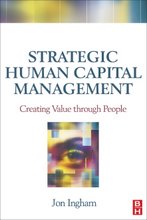Written by Jay Jamrog, Senior VP of Research, i4cp
Jon has asked i4cp to give our perspective on HCM. Since I’m a researcher, trend watcher and futurist, I thought I would write about some of the challenges the HR professions faces today and in the years to come. Many of these challenges have been around for awhile but the failure to address them will only increase the pain in organizations in the future.
First challenge: Figure out what talent management means. Today, too much is being written about integrated talent management – breaking down the silos in HR and developing a holistic strategy for HR – and not enough about how HR identifies the talent gaps that the organizations will face over the next 3 to 5 years. The objective of TM is not only to fix HR but also, and probably more important, to insure that the right people with the right skills are in the right place at the right time so that the business can execute the strategy. Integration is only a possible means to an end. The true goal is execution.
Second Challenge: Get beyond the multi-generational hurdle. Trying to develop procedures and practices to accommodate four or five different generations will drive HR crazy. People don’t fit neatly into a stereotypical generational cohort group. The key to retaining and engaging the best and the brightest today is to treat each individual as an individual and build trusting relationships between supervisors and employees.
Third Challenge: Get to the next level of HR metrics. If HR is going to move the profession forward, it needs to get beyond measuring the efficiency of HR programs – time to fill, headcount, turnover rates, training competed, etc. - and start measuring the effectiveness of those HR programs. For example, time to fill (efficiency) numbers has no meaning unless you can report that the quality of hire (effectiveness); turnover (efficiency) numbers have to be combined with the quality of separation (effectiveness). Even more important for HR is solving the great debate on measuring the “impact” that all of the HR programs has on the organization and its ability to execute the business strategy.
Fourth Challenge: Understand the impact that technology will have and not have. Most of the HR profession has yet to reap the long-promised rewards that vendors are claiming for technology solutions. This is not because the HCM technology is flawed; it is because, in most cases, HR fails to have a comprehensive strategy for technology. Technology will make HR more efficient in the future but the question is how will HR become more effective. It has been said before that the more high-tech we become, the more people in organizations will need “high-touch.” HR needs a strategy for making their organizations more high-touch.
Fifth Challenge: Keep up to speed on the latest trends and issues. The rapid pace of change - coupled with information overload - makes thinking about the future a daunting task. How does the average HR professional get information on the forces of change (demographic, social, political, legal, economic, technological trends) and then find the time to analyze the possible impacts that they will have on the organization? HR needs solid solutions in this area.
Overall, I think that HR is at a tipping point and the biggest challenge will be to get beyond “fixing” HR (faster, better, cheaper) and to stop worrying about being a business partner and getting a seat at the table. The conversation needs to get to a level where the HR professional addresses the issues related to the impact that they are having on the organization and how they tell that story. Addressing that challenge and the five challenges listed above will take a combination of intelligence, accountability and curiosity, allowing HR to move from “How good do I have to be?” to “How good can I be?”
 Tony Restell at Top Consultant asked for a chance to respond to my slightly less than overwhelmed response to their recent virtual careers fair.
Tony Restell at Top Consultant asked for a chance to respond to my slightly less than overwhelmed response to their recent virtual careers fair.




































